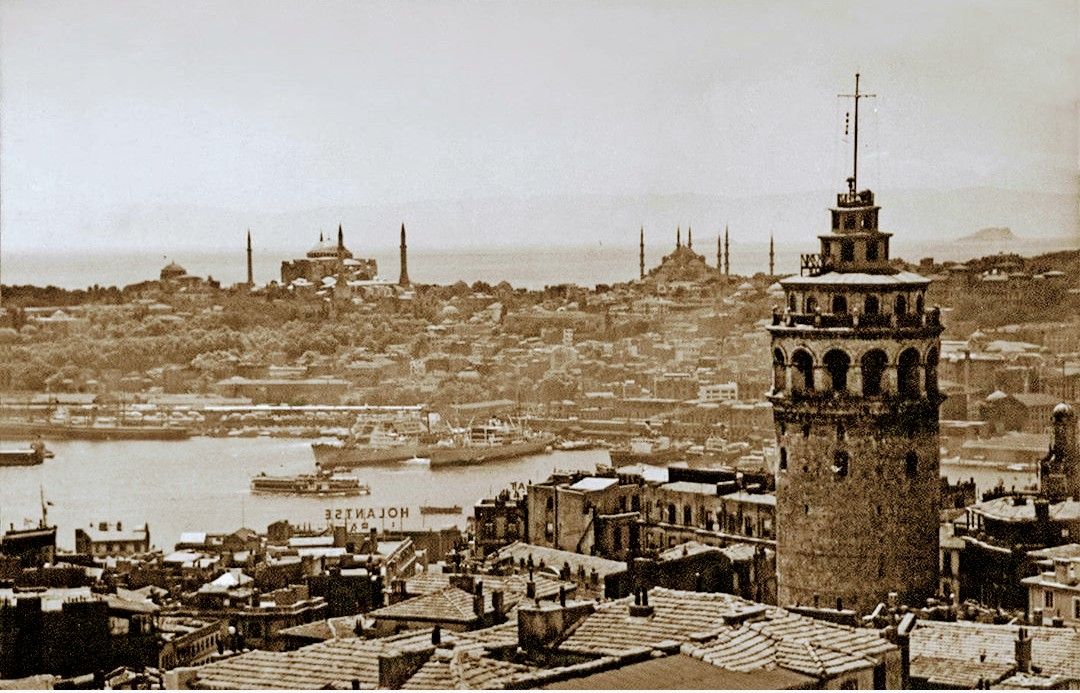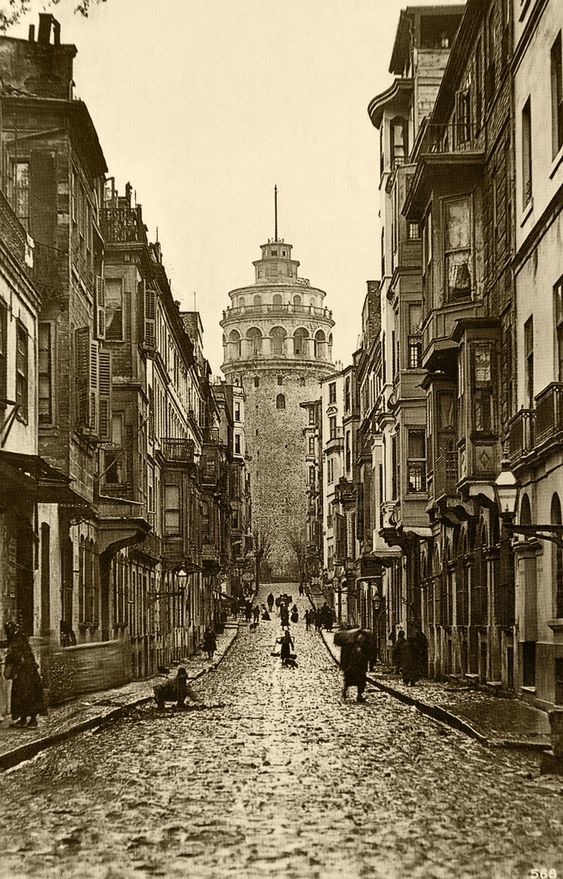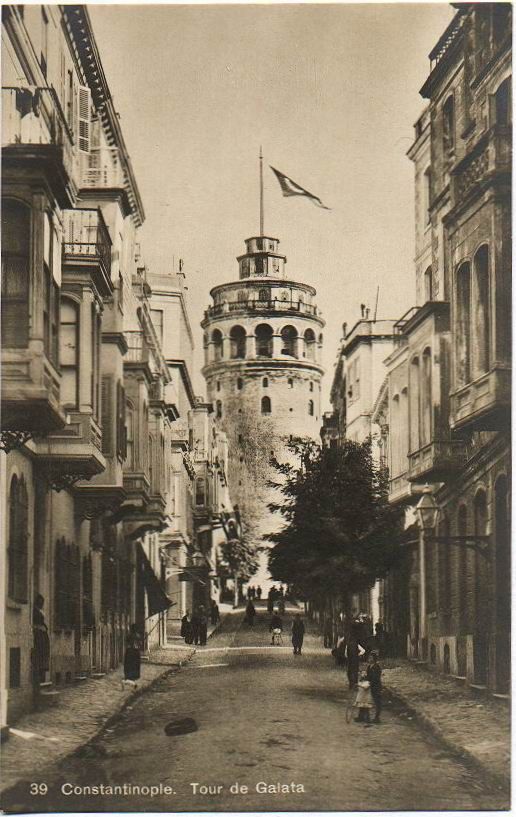Galata Tower
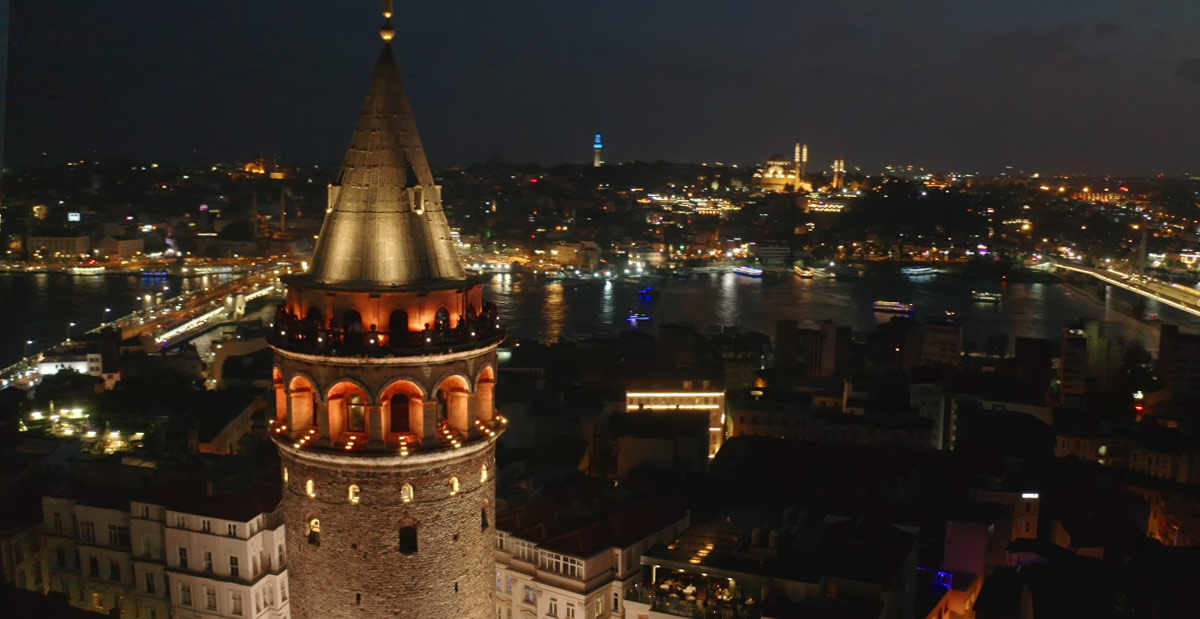
Galata Tower, which is considered one of the oldest towers in the world and a symbol of Istanbul, was included in the UNESCO World Heritage Temporary List in 2013. As one of the most important structures shaping the silhouette of Istanbul, Galata Tower was originally used as a fire observation tower and was named Galata Fire Tower.
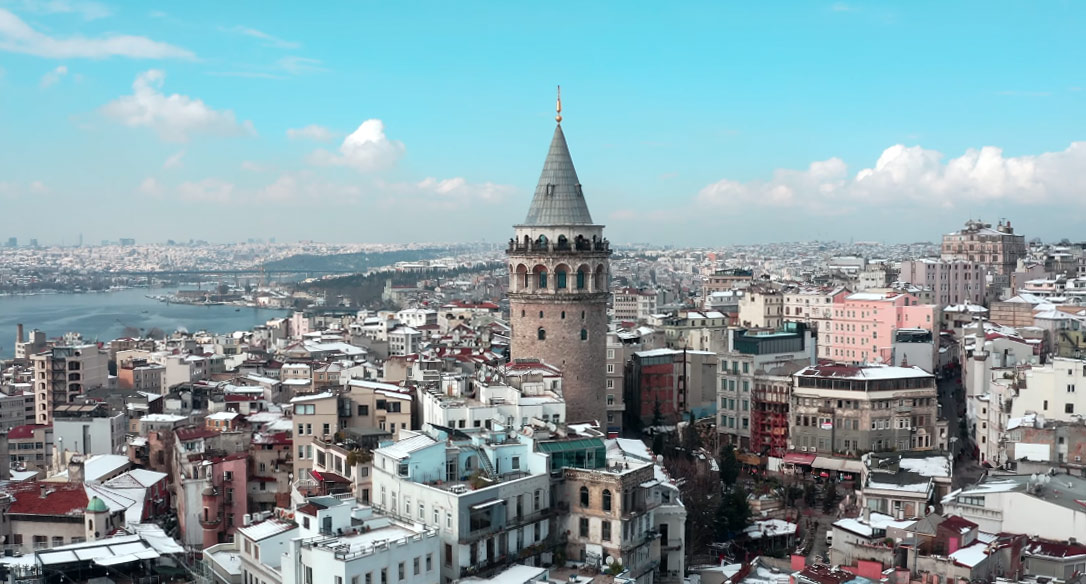
In the 17th century, Hezarfen Ahmet Celebi conducted his flight experiments from Galata Tower, attaching wooden wings to his back, and completed his flight in Uskudar. It is known that this flight increased the interest in the tower.
Who Built Galata Tower?
Galata Tower was initially built by Byzantine Emperor Justinianos in the years AD 507-508. The current tower was rebuilt by the Genoese in 1348-49. The tower was raised between 1445-46. In the 1500s, it suffered damage from an earthquake and was repaired by Architect Murad bin Hayreddin. After the restoration during the reign of Sultan Selim III, a bay window was added to the top floor of the tower. In 1831, the tower experienced another fire, and Sultan Mahmud II added two more floors to the tower and covered the top with the famous cone-shaped roof. The tower underwent restoration in 1967 and again in 2020.
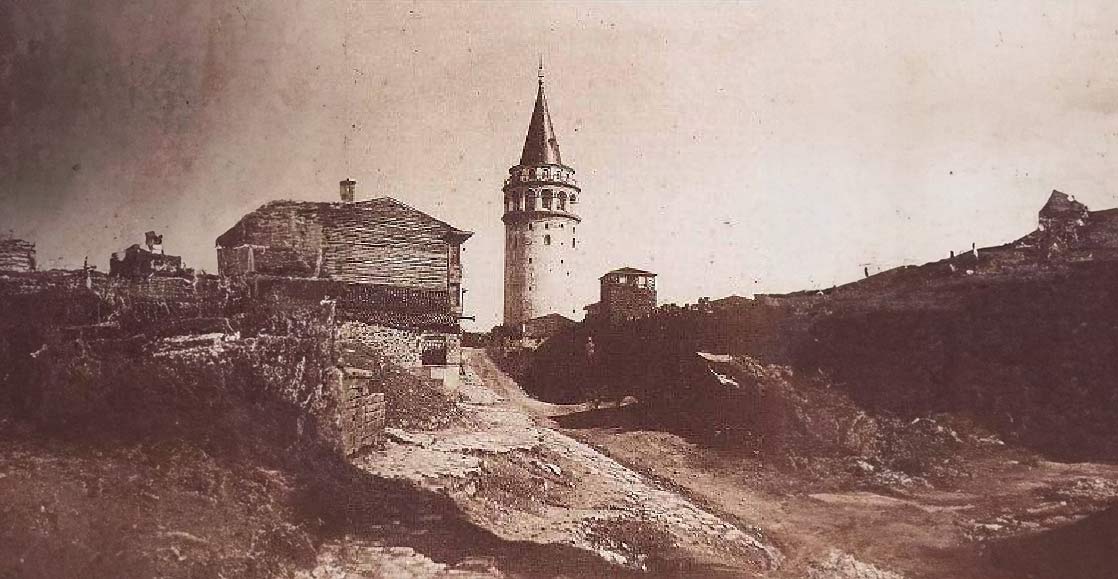
Architecture of Galata Tower
Galata Tower was built using rubble masonry. The exterior is made of stone masonry. The inscription on the entrance, consisting of 16 verses, is believed to have been written in the name of Sultan Mahmud II, as it was made during his reign.
The round-arched window above the gate served as a lookout point for soldiers. It is a nine-story structure after the elevated entrance floor. The windows on its cylindrical body have brick masonry with round arches. The development of the last two floors below the cone-shaped roof is emphasized by profiled moldings surrounding the cylindrical body. There is a metal-decorated lattice balcony that surrounds the floor below the cone-shaped roof. The lower floor features round-arched windows with deep niche pilasters and brick masonry.
Today, it is observed that the lower three floors of the structure have Genoese characteristics, while the other floors carry Ottoman characteristics. The tower is currently used for social and cultural activities.
How to Get There: By Private Vehicle: You can reach Galata Tower by taking the Galata Tower sign on the left when going up to Taksim from Tarlabasi Road. You can park your vehicle in the parking lots around the tower. By Public Transportation: First, you need to reach Taksim. After passing through Istiklal Avenue from beginning to end, you can reach the tower about 500 meters down from the end of the street. If you prefer to come from Eminonu, you can take the uphill route from Bankalar Avenue or use the tunnel to reach the tower.
Galata Tower is a must-visit destination for those who want to explore the history and beauty of Istanbul. With its historical and architectural significance, stunning views, and the experiences it offers to visitors, it attracts thousands of people every year. Don’t miss the chance to visit this enchanting structure!
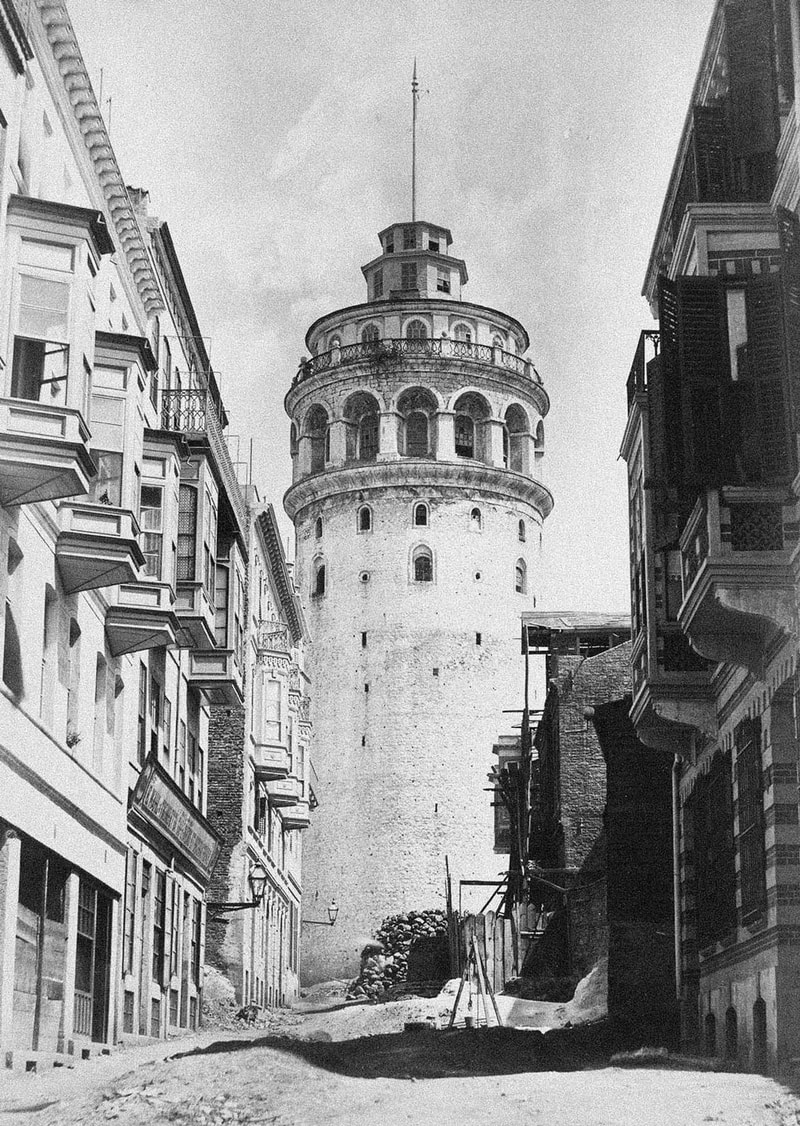
Galata Tower: The Iconic Landmark of Istanbul
Galata Tower, one of the most iconic symbols of Istanbul, captivates with its historical background and intriguing legends. First constructed by the Romans in the 5th century, this tower stood as one of the tallest structures of its time and currently measures 67 meters in height.
During the Roman era, Istanbul consisted of 14 neighborhoods, and Galata was one of them. Consequently, the Romans referred to the tower built in this area as Galata Tower. In the 5th century, Galata became an important point for maritime trade due to its proximity to the sea. The Romans erected Galata Tower to protect and continuously observe Galata, which was one of the city’s vital locations. From this tower, they could observe everything happening in the city, including its people, conflicts, noises, fires, the sea, boats—essentially, everything.
However, in the late 12th century, as the power of the Roman Empire declined, the Genoese invaded Galata in the early 13th century. When the Genoese occupied the area, Galata Tower was already in ruins due to previous fires and earthquakes. Additionally, the original Galata Tower was made of wood during the Roman era. The Genoese demolished the tower and erected a new one, this time using stone. They adorned its top with a huge cross and named it the “Tower of Christ” or “Christ Tower.” The Genoese also used this tower for observational purposes, just like the Romans did.
In 1453, when Fatih Sultan Mehmet conquered Istanbul, he ordered the removal of the cross from the top of Galata Tower and renamed it “Galata Tower” to align with the name of the region.
During the 16th century, a massive earthquake caused significant damage to Galata Tower, leading to its reconstruction in the 17th century, acquiring its final form.
Throughout the Ottoman period, Galata Tower served not only as an observation point but also as a prison. During the reign of Kanuni Sultan Süleyman (Suleiman the Magnificent), it was used as a prison.
Galata Tower is surrounded by numerous legends and stories. One of the most famous is the Roman legend: according to this myth, if a man and a woman climb Galata Tower together for the first time, they are destined to marry. If either or both of them have previously ascended the tower with someone else or alone, the enchantment is believed to be broken.
Another well-known legend has a more fairy-tale-like narrative. According to this story, Galata Tower and Maiden’s Tower were deeply in love with each other. However, there was a vast strait separating them, preventing the two towers from physically uniting. Hezarfen Ahmet Çelebi, unable to resist the insistence of Galata Tower, took the love letters written by Galata Tower to Maiden’s Tower with him while flying from Galata Tower to the Anatolian side in Üsküdar. As he flew over Maiden’s Tower, he dropped the letters, which landed on Maiden’s Tower. Reading the letters, Maiden’s Tower realized that her love was reciprocated, and she began to radiate even more beauty. Witnessing Maiden’s Tower’s increasing beauty, Galata Tower understood that their love was mutual and rejoiced. Despite the enormous strait between them, these two towers continued to gaze at each other through the centuries, defying time.
Galata Tower, with its historical significance, breathtaking views, and enchanting legends, remains an important symbol of Istanbul. Visitors will delight in exploring the captivating stories behind this historical structure and the panoramic Istanbul vista it offers.
